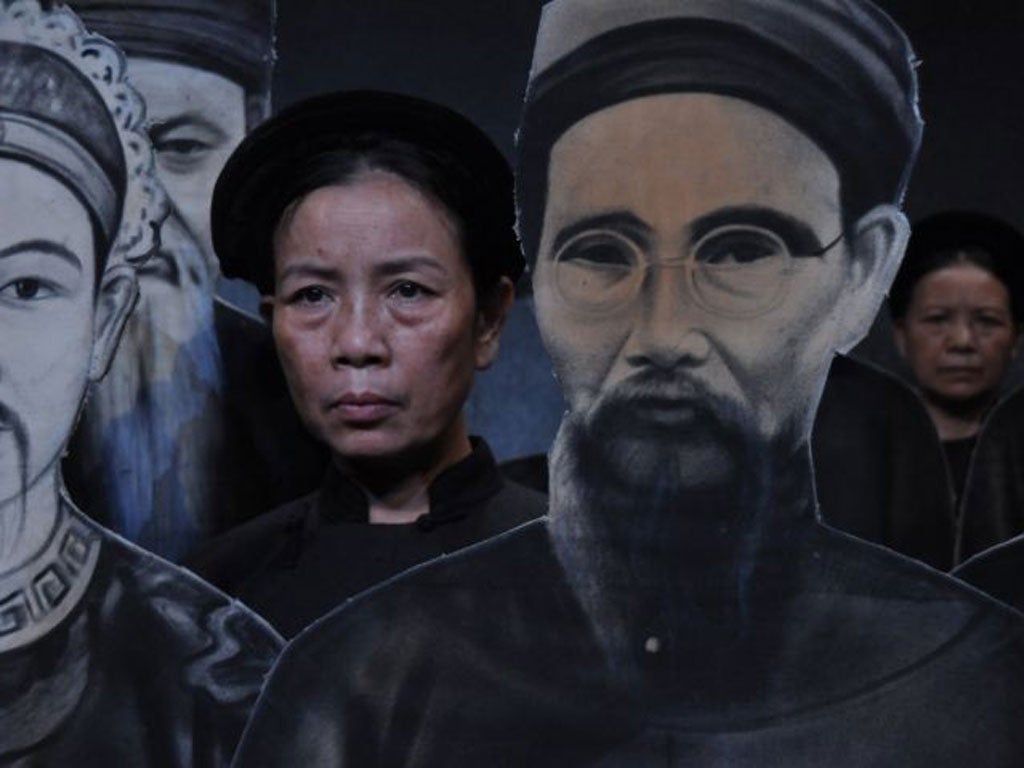Drought and Rain, Sadler's Wells, London

Drought and Rain is a work about memory, remembered. French-Vietnamese choreographer Ea Sola uses a mix of folk and contemporary dances to evoke traditional Vietnamese life, a lament of hardship and loss. It's a slow-paced work, with too much repetition, but the best scenes have a matter-of-fact force.
Sola first created the work in 1995, with a cast of older women who had lived through the Vietnam war. She drew on their memories of dances and rituals of their youth, before the war. Those performers are now in their 80s and 90s; for this recreation, Sola has cast a younger generation. These women did not fight in the war, though they remember singing for wounded troops.
In fact, Drought and Rain looks back to a world before the war. The work opens with screens showing a monochrome landscape, a stylised depiction of hills and mist. A crowd of women come forward, holding life-sized cardboard cutouts. The images show people from earlier generations, from warriors with swords to women with fans.
The work is powered by its music. Musicians sit at the side of the stage, playing traditional instruments. The women of the ensemble sing as well as dance. The lyrics are about landscape and memory.
In a later scene, women in rain wraps and conical straw hats stand in a huddle, heads bowed, their faces hidden. Braced against the elements, they cover up all their individuality. Once they shift out of their wraps, they stand tilted at angles. Sola's steps tend to be low-key and abstract, shuffles and turns on the spot.
The women advance and retreat, each at her own speed. There's a gesture with each shuffle forwards or backwards. The moves are lightly done, but there's a suggestion of violence: the women make fists or claws of their hands, hold their arms as if cradling guns.
One woman takes a photograph from her pocket as she shuffles forward, holding it out to the audience. By the end of this sequence, everyone holds out pictures, people who have been lost. As they come to a halt, the women smile – unnerving smiles, showing a lot of teeth.
Sola eddies around her themes, sometimes grinding to a halt. There's a lot of repetition and slow scenes with not much happening. Yet Drought and Rain does suggest a past world, a harsh life just on the fringes of memory.
Join our commenting forum
Join thought-provoking conversations, follow other Independent readers and see their replies
Comments